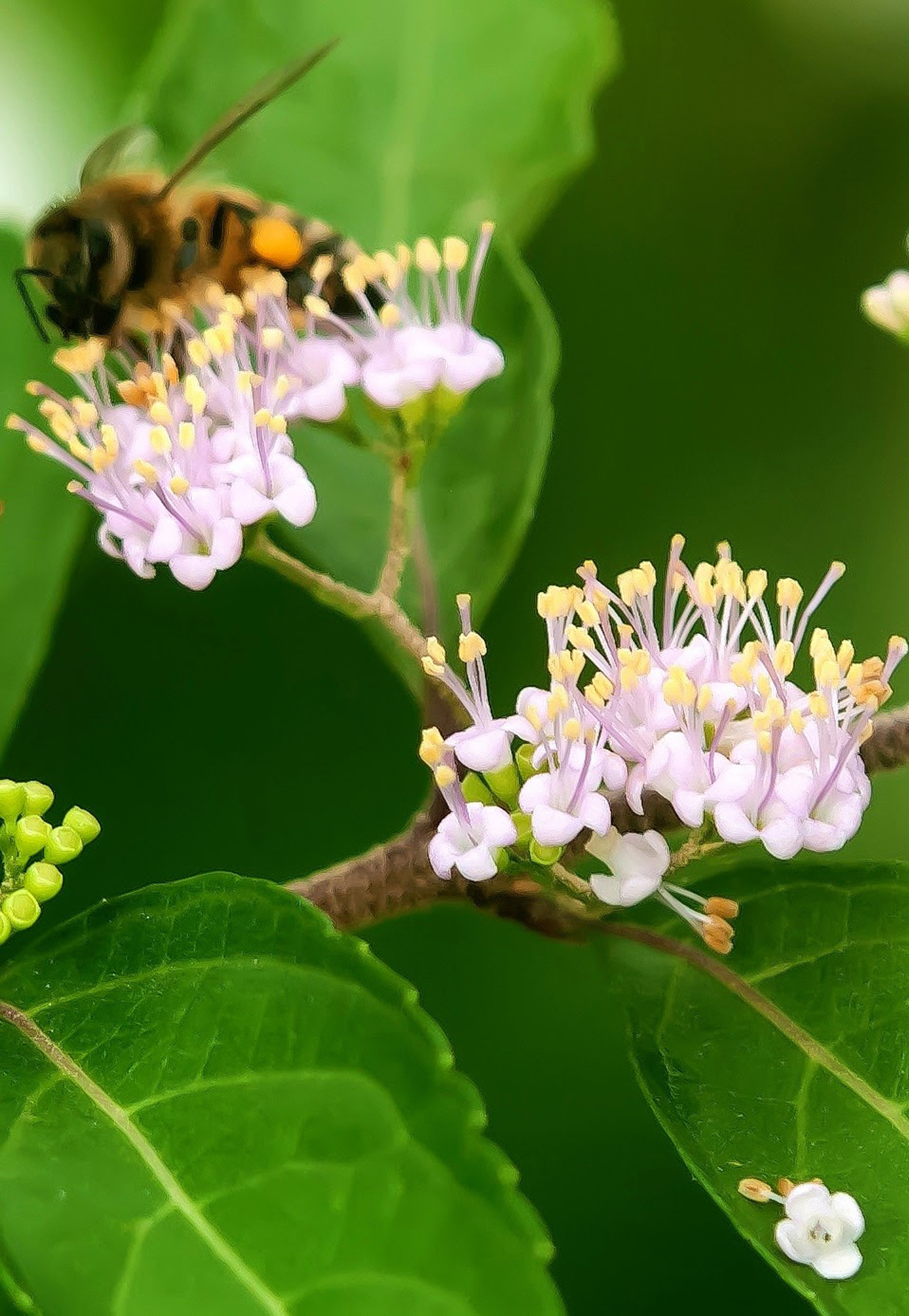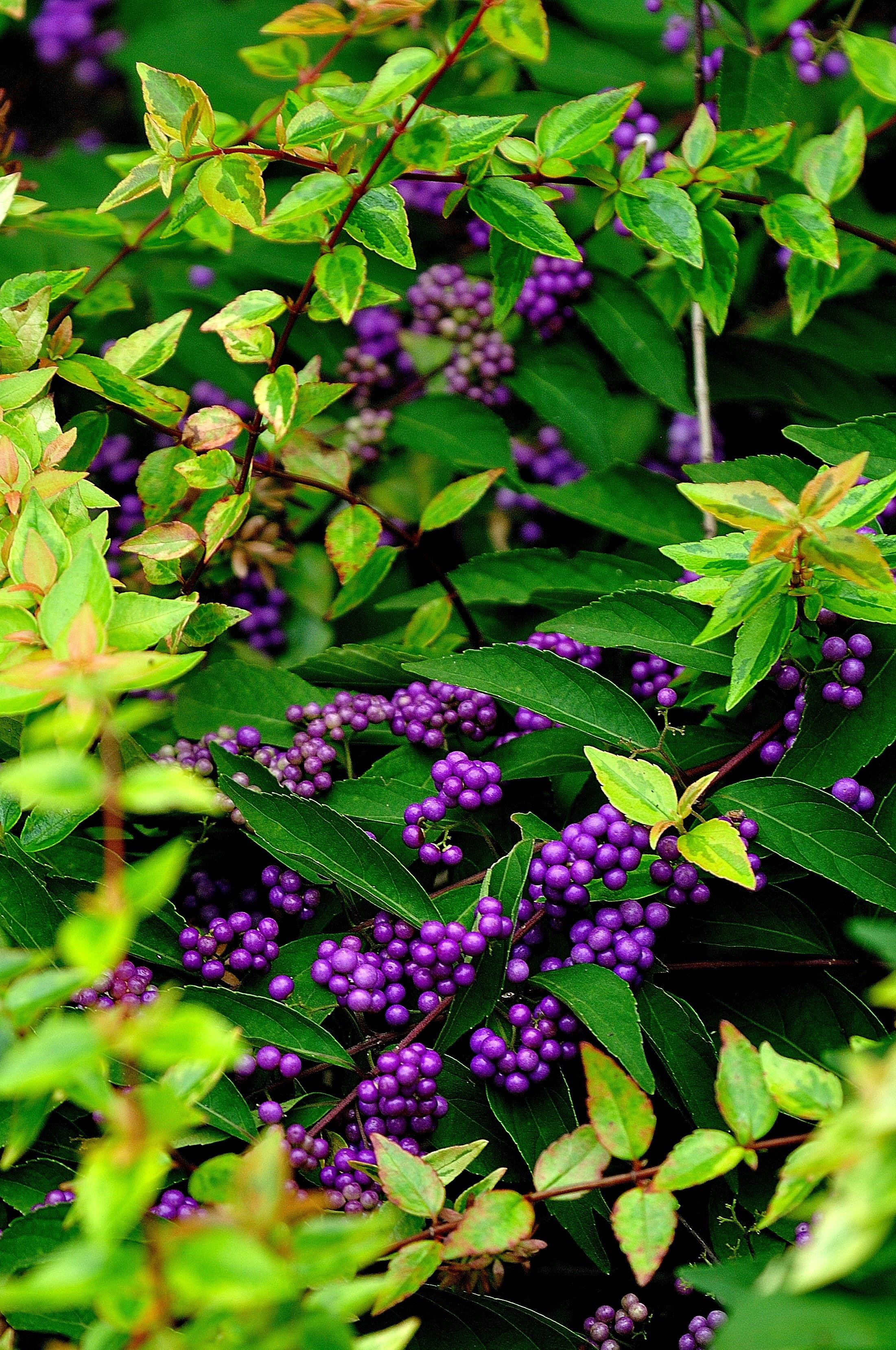Farm & Ranch
The Garden Guy — Coming into Rare and Colorful Beauty

By Norman Winter
All over the south, America’s most beautiful berry is stunning those who come across it in the wild. Those who have incorporated it into their landscape; however, are in a state of celebration. This berry is non-other than the American beautyberry, Callicarpa Americana.
In North Texas you’ll find it is native in Dallas, Tarrant, Denton, and Grayson Counties but is really not finicky on soil. Though it is native in 14 states, from Missouri, Tennessee to Virginia, Maryland and all states south from Texas to Florida, it has the common name French Mulberry. American beautyberry is an arching deciduous shrub that can reach five to eight feet in height.
Many gardeners are surprised to find it is in the verbena family. Like its other shrubby relatives, it is a pollinator magnet when in bloom. You really have to pay attention, though, to notice the intricately designed blooms as they tend to be hidden by leaves.
Amazingly, the blooms are quickly followed by hundreds of glistening berries.
The berries that catch our eye most often are those with the richest purple, a color fit for royalty. You’ll typically find them more prevalent in moist areas with richer soils of the forest floor but will work in the landscape in typical garden soils.
According to the USDA, the berries are eaten by over 40 species of birds. Mockingbirds, Brown Thrashers, American Robins and Eastern Towhees are a few of the notable birds you may find devouring the fruit and of even greater interest to North Texas farmers and ranchers is that it is relished by Bob White Quail.
To read more pick up a copy of the September 2018 NTFR issue. To subscribe call 940-872-5922.
Farm & Ranch
Hazards of Backyard Poultry

By Barry Whitworth, DVM
Having backyard poultry is a popular agriculture enterprise. According to the United States Department of Agriculture, 0.8 percent of all households in the United States have chickens. People keep chickens for a variety of reasons with table eggs being one of the more common reasons.
Unfortunately, some of these poultry producers are not aware of the hazards that come with keeping poultry because many times they carry pathogens but appear healthy.
Chickens are carriers of several zoonotic diseases. These are diseases that can be passed from animals to humans. According to a recent survey in Pennsylvania, a majority of backyard poultry producers were aware of the dangers of avian influenza. However, this study also revealed that far fewer producers were aware of the risk of possible exposure to Salmonella and Campylobacter.
The lack of knowledge about the hazards of raising poultry likely contributes to the continued issues of Salmonella outbreaks associated with backyard poultry. In 2023, the Centers for Disease Control and Prevention reported 1,072 illnesses of Salmonella linked to backyard poultry, and 272 of those patients required hospitalization. Oklahoma reported 43 individuals with the disease.
To read more, pick up a copy of the April issue of NTFR magazine. To subscribe by mail, call 940-872-5922.
Farm & Ranch
Ag Elsewhere: Wyoming

By Tressa Lawrence
Babies are tucked away in every nook and cranny. Many ranchers across Wyoming have baby animals popping up all over this time of year.
Farm & Ranch
Ag Elsewhere: Montana

By Lindsey Monk
Another load of grain in to keep feeding the calves until the green grass can really start popping.
-

 Country Lifestyles1 year ago
Country Lifestyles1 year agoScott & Stacey Schumacher: A Growth Mindset
-

 Equine7 months ago
Equine7 months agoThe Will to Win
-

 Country Lifestyles7 years ago
Country Lifestyles7 years agoStyle Your Profile – What your style cowboy hat says about you and new trends in 2017
-

 Country Lifestyles4 years ago
Country Lifestyles4 years agoAmber Crawford, Breakaway Roper
-

 HOME7 years ago
HOME7 years agoGrazing North Texas – Wilman Lovegrass
-

 Country Lifestyles7 years ago
Country Lifestyles7 years agoDecember 2016 Profile, Rusty Riddle – The Riddle Way
-

 Country Lifestyles8 years ago
Country Lifestyles8 years agoJune 2016 Profile – The man behind the mic: Bob Tallman
-

 Outdoor9 years ago
Outdoor9 years agoButtercup or Primrose?







